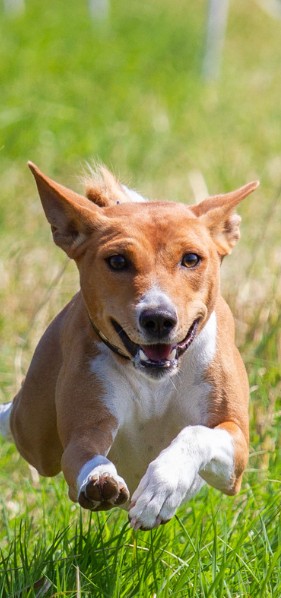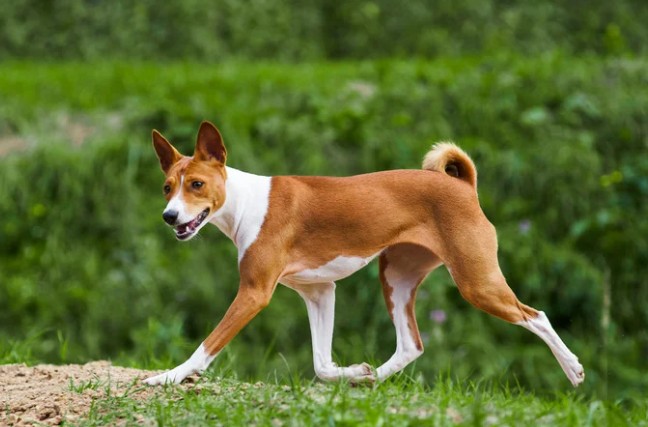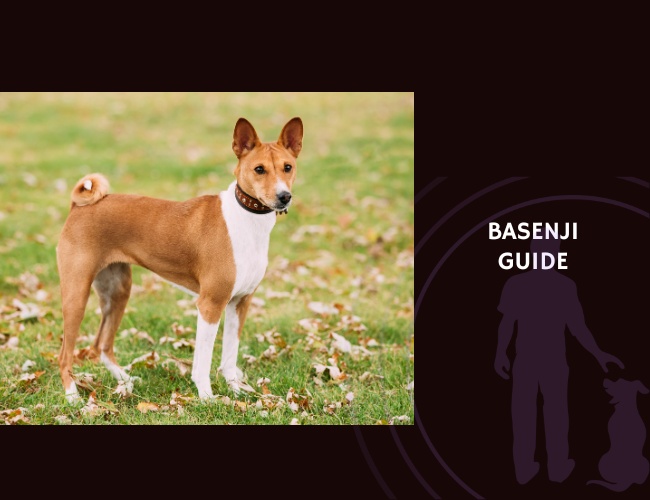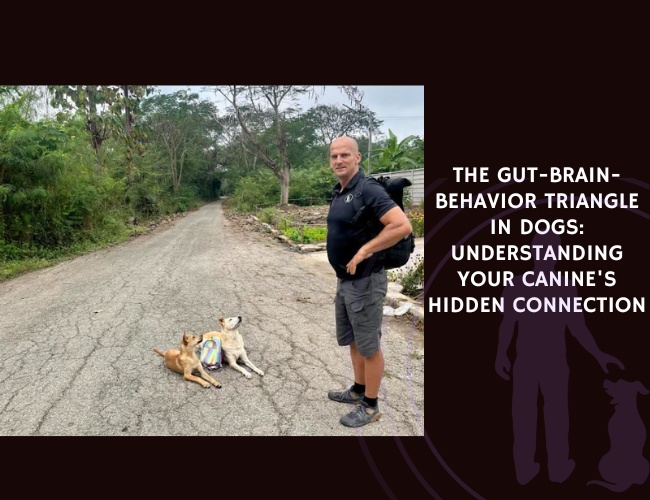The Basenji, often called the “barkless dog,” carries within its elegant frame thousands of years of African hunting heritage. This ancient breed, whose name means “dog of the bush” in Lingala, offers modern families a glimpse into canine evolution’s most fascinating chapters. Let us guide you through understanding this remarkable breed—from their unique vocalizations to their cat-like independence—so you can determine if this intelligent, spirited companion might be the perfect addition to your life.
Character & Behavior: Understanding Your Basenji’s Ancient Soul
Primitive Temperament and Evolutionary Behavior
Your Basenji’s independence isn’t stubbornness—it’s the echo of millennia spent as a self-reliant hunter in Central African forests. These dogs evolved alongside humans in the Congo Basin, developing a temperament that balances cooperation with remarkable self-sufficiency. You might notice your Basenji making decisions independently, a trait that served their ancestors well when hunting small game through dense undergrowth.
This primitive temperament manifests in several distinctive ways:
- Problem-solving prowess: Your Basenji approaches obstacles like puzzles to solve, not commands to follow
- Resource awareness: They exhibit heightened awareness of valuable resources, from food to comfortable sleeping spots
- Environmental vigilance: Constant scanning of their surroundings reflects their hunting heritage
Their aloofness toward strangers isn’t rudeness—it’s an evolutionary adaptation that helped their ancestors survive in challenging environments. This selective sociability means your Basenji chooses their trusted circle carefully, making their affection all the more precious when earned. 🧡
Vocalization Patterns and the Absence of Barking
Did you know your Basenji’s unique yodel-like vocalizations stem from anatomical differences in their larynx? Unlike typical dogs, Basenjis produce an array of sounds ranging from the famous “baroo” to growls, whines, and even screams. These vocalizations serve specific communicative purposes:
The Basenji vocal repertoire includes:
- Baroos: Expressing excitement, greeting loved ones, or alerting to interesting stimuli
- Yodels: Often heard during play or when particularly happy
- Growls and grumbles: Communicating displeasure or establishing boundaries
- Screams: Reserved for extreme distress or excitement
Understanding these sounds helps you respond appropriately to your Basenji’s needs. A morning baroo might mean “I’m so happy you’re awake!” while an evening grumble could translate to “I’m not ready to come inside yet.” This rich vocal language, combined with expressive body language, creates a communication system as nuanced as any barking breed.
Prey Drive and Environmental Scanning Behavior
Your Basenji’s prey drive isn’t merely high—it’s hardwired into their neural pathways through generations of hunting selection. This means you’ll observe fascinating behavioral patterns:
In enclosed spaces, your Basenji might stalk shadows or pounce on toys with calculated precision. In open areas, their behavior transforms—head high, ears pricked, every muscle ready for pursuit. This environmental responsiveness shows sophisticated cognitive processing, as they adjust hunting strategies based on surroundings.
Managing this prey drive requires understanding, not suppression. Channel it through:
- Lure coursing: Allowing safe expression of chase instincts
- Flirt pole play: Providing controlled hunting simulation
- Hide-and-seek games: Engaging their tracking abilities
Remember, a Basenji spotting a squirrel experiences a neurochemical cascade similar to what their ancestors felt tracking antelope. Respecting this drive while ensuring safety creates a trusting relationship with your intelligent companion.
Pack Structure and Selective Social Attachment
Unlike breeds developed for group hunting, Basenjis form selective, intense bonds rather than broad pack connections. Your Basenji might adore one family member above all others, tolerate some, and remain perpetually skeptical of others. This isn’t personal—it’s their ancestral programming for survival through careful alliance selection.
Signs of Basenji attachment include:
- Shadow behavior: Following their chosen person room to room
- Gentle touches: Initiating contact through paw placement or leaning
- Resource sharing: Willingly sharing prized possessions with trusted individuals
- Protective positioning: Placing themselves between their person and perceived threats
Their tolerance for physical affection varies dramatically between individuals and moments. A Basenji seeking cuddles in the morning might prefer respectful distance by afternoon. Reading these preferences strengthens your bond and shows respect for their autonomous nature.
Stress Behavior and Coping Mechanisms
Recognizing stress in your Basenji requires understanding their unique coping strategies. Unlike breeds that vocalize distress through barking, Basenjis often internalize stress, making vigilant observation crucial.
Common stress indicators include:
- Excessive grooming: Particularly of paws or flanks
- Withdrawal: Seeking isolation in quiet spaces
- Appetite changes: Either refusing food or stress eating
- Displacement behaviors: Sudden interest in unrelated activities
Research suggests Basenjis show elevated cortisol responses to confinement, novelty without choice, and forced social interactions. Their coping mechanisms often involve creating distance—physical or emotional—from stressors. Providing safe spaces where your Basenji can retreat without pursuit respects their need for autonomous stress management.
Creating a low-stress environment means predictable routines, clear communication, and respecting their need for choice. A Basenji who feels in control of their environment exhibits fewer stress behaviors and forms stronger human bonds. 🐾

Training & Education: Working With Independent Intelligence
Cognitive Independence and Motivation Conflict
Training your Basenji means embracing a fundamental truth: they’re not disobedient, they’re discerning. Their cognitive independence stems from thousands of years of making split-second hunting decisions without human guidance. This means traditional “command-obey” training often fails spectacularly.
Instead, successful Basenji training involves:
- Collaborative problem-solving: Presenting training as puzzles to solve together
- Variable reinforcement: Keeping rewards unpredictable and interesting
- Session brevity: Respecting their attention span with 5-10 minute focused sessions
- Choice incorporation: Allowing them to choose between two acceptable behaviors
You might notice your Basenji performing a behavior perfectly once, then seemingly “forgetting” it. They haven’t forgotten—they’re questioning its continued relevance. This constant evaluation of effort versus reward reflects sophisticated cognitive processing, not stubbornness.
Reinforcement Sensitivity and Food Drive
While many assume all dogs are food-motivated, Basenjis often show more nuanced reinforcement preferences. Your Basenji might work enthusiastically for freeze-dried liver one day, then show complete disinterest the next. This variability isn’t fickleness—it’s selective engagement based on perceived value.
Effective reinforcement strategies include:
- Toy rewards: Many Basenjis value play over food
- Environmental rewards: Access to interesting smells or chase opportunities
- Social rewards: Genuine praise from their chosen person
- Activity rewards: Using life rewards like walks or car rides
Managing arousal during training proves crucial. An over-aroused Basenji loses learning capacity, while an under-aroused one sees no point in participating. Finding that sweet spot—engaged but thinking—transforms training from battle to dance.
Recall and Off-Leash Training Challenges
Let’s address the elephant in the room: Basenji recall. Their independent nature and high prey drive create unique challenges for off-leash reliability. However, this doesn’t mean recall training is impossible—it means approaching it strategically.
Building reliable recall involves:
- Foundation work: Starting in zero-distraction environments
- High-value rewards: Finding what truly motivates your individual Basenji
- Incremental challenges: Slowly increasing distractions
- Safety first: Using long lines during training phases
- Alternative cues: Teaching whistle recall for distance work
Many Basenji owners find success with “conditional recall”—reliable response in specific contexts rather than universal compliance. Your Basenji might recall perfectly in familiar woods but ignore you completely at the beach. Understanding and working within these parameters keeps everyone safe while respecting their nature.
Social Cue Interpretation and Gaze Aversion
Your Basenji’s tendency toward gaze aversion isn’t defiance—it’s culturally appropriate communication in their worldview. Direct staring, comfortable for humans, reads as confrontational to many Basenjis. They communicate respect and peaceful intentions through soft eyes and peripheral attention.
This affects training significantly. Commands delivered with intense eye contact might trigger avoidance, while requests made with relaxed body language and soft focus often succeed. Your Basenji reads your entire body, not just your words:
- Shoulder position: Squared shoulders signal intensity
- Hand placement: Relaxed hands communicate safety
- Breathing patterns: Calm breathing encourages compliance
- Movement quality: Smooth movements build trust
Learning to “speak Basenji” through appropriate body language dramatically improves training success and deepens your relationship.
Enrichment-Based Learning and Scentwork Suitability
Harnessing your Basenji’s natural abilities through enrichment-based learning transforms education from chore to joy. Their exceptional scenting abilities, combined with problem-solving skills, make them naturals for nose work activities.
Enrichment opportunities include:
- Formal nose work: Following specific scent discrimination protocols
- Scatter feeding: Hiding meals to engage foraging instincts
- Puzzle toys: Challenging their problem-solving abilities
- Tracking games: Following human or toy trails
- Hide and seek: Combining social bonding with hunting simulation
These activities do more than entertain—they fulfill deep behavioral needs. A Basenji engaged in regular enrichment shows fewer behavioral problems, stronger training focus, and deeper human bonds. The mental fatigue from 20 minutes of scent work often exceeds that from an hour-long walk, making it invaluable for urban Basenjis.
Nutritional Recommendations: Feeding Your Athletic Companion
Metabolic Requirements of a Lean, Active Breed
Your Basenji’s sleek physique isn’t just aesthetic—it reflects metabolic adaptations for efficiency in harsh environments. These dogs evolved to extract maximum nutrition from minimal resources, creating unique dietary needs for modern Basenji owners to consider.
Calculating appropriate caloric intake requires considering:
- Base metabolic rate: Generally 25-30 calories per pound for adults
- Activity level: Adding 20-40% for active individuals
- Environmental factors: Cold weather increases caloric needs
- Life stage: Puppies and seniors have modified requirements
Your Basenji’s lean muscle mass means they have little reserve for caloric restriction. Even slight underfeeding can impact energy levels and coat quality. Conversely, overfeeding quickly leads to unhealthy weight gain, stressing joints and compromising their athletic abilities.
Digestive Sensitivities and Food Intolerances
Many Basenjis exhibit digestive sensitivities that likely stem from their evolutionary history with limited dietary variety. Your Basenji’s ancestors thrived on whatever protein sources were available, developing efficient but sometimes inflexible digestive systems.
Common sensitivities include:
- Grain intolerance: Manifesting as loose stools or skin issues
- Novel protein reactions: Introducing new proteins gradually prevents upset
- Fat sensitivity: Requiring moderate fat levels for optimal digestion
- Additive reactions: Artificial colors and flavors often trigger responses
Limited ingredient diets (LID) often work well for sensitive Basenjis. Starting with single protein sources and minimal ingredients allows you to identify triggers while ensuring complete nutrition. Monitoring stool consistency provides immediate feedback on dietary tolerance—firm, well-formed stools indicate good digestion, while loose stools suggest dietary adjustment needs.
Wild Soul. Silent Mind. Ancient Eyes.
You don’t train a Basenji. You negotiate. Behind those almond-shaped eyes lies not disobedience, but decision. Not defiance, but discernment. They are not here to impress—they are here to be. And in that being, they reflect something older than commands, something deeper than obedience: a memory of the wild, walking quietly beside you.
A Basenji doesn’t bark for your approval. It yodels when it wants something. It observes, calculates, chooses. You don’t own this dog—you earn its attention, maybe its affection. You’ll question yourself. You’ll adapt your methods. And if you’re open enough to meet the silence with respect, the reward is rare: a dog who follows not out of habit, but because it has chosen you.



This isn’t a breed. It’s a blueprint. A living fragment of canine history, untouched by centuries of domestication theater. The Basenji doesn’t fit into your life—you shape your life to include it. But if you do, you’ll discover something most dog owners never glimpse: not a reflection of your control, but a partnership rooted in ancient trust.
Coat and Skin Health Support via Nutrition
Your Basenji’s short, fine coat requires specific nutritional support to maintain its characteristic shine and skin health. Despite minimal grooming needs, nutritional deficiencies quickly manifest as dull coat or flaky skin.
Essential nutrients for coat health include:
- Omega-3 fatty acids: From fish oil or algae sources
- Omega-6 fatty acids: Balanced with omega-3s for optimal effect
- Zinc: Critical for skin integrity and wound healing
- Biotin: Supporting healthy skin cell turnover
- Quality protein: Providing amino acids for coat growth
Basenjis prone to dry skin benefit from supplementation during winter months or in dry climates. Adding a teaspoon of coconut oil or fish oil to meals can dramatically improve coat quality within weeks. However, introduce oils gradually to prevent digestive upset.
Nutraceutical Support for Gut and Immune Function
Supporting your Basenji’s gut health creates cascading benefits throughout their system. Their evolutionary history in parasite-rich environments selected for robust immune systems, but modern living can disrupt these natural defenses.
Beneficial supplements include:
- Probiotics: Supporting beneficial gut bacteria
- Prebiotics: Feeding existing beneficial bacteria
- Digestive enzymes: Aiding nutrient absorption
- Antioxidants: Protecting against cellular damage
- Colostrum: Providing immune factors
Start supplements individually, allowing time to assess effects before adding others. Many Basenjis thrive on rotational probiotic strains, mimicking the dietary variety their ancestors experienced. Quality matters—choose supplements specifically formulated for dogs, with guaranteed viable organisms.
Feeding Patterns and Portion Regulation
Your Basenji’s feeding behavior often reflects their ancestral feast-or-famine pattern. They might inhale food as if competing with packmates, even when dining alone. This behavior, while normal, can lead to issues:
Strategies for healthy feeding include:
- Scheduled meals: Two meals daily for adults prevents bloat risk
- Puzzle feeders: Slowing consumption and providing enrichment
- Portion measurement: Using scales rather than cups for accuracy
- Food stations: Separate feeding areas in multi-pet households
- Calm environment: Reducing competition stress during meals
Some Basenjis develop resource guarding around food. Address this through positive reinforcement training, teaching that human approach during meals means good things arrive. Never punish food guarding—it increases anxiety and worsens the behavior. 🧡

Health Concerns: Protecting Your Basenji’s Wellbeing
Fanconi Syndrome and Renal Health
Fanconi syndrome represents one of the most significant health concerns in Basenjis, affecting how kidneys process nutrients. This inherited condition causes the kidneys to inappropriately lose vital nutrients in urine, potentially leading to serious complications if unmanaged.
Understanding Fanconi syndrome involves recognizing:
- Genetic basis: Inherited as an autosomal recessive trait
- Age of onset: Typically appearing between ages 4-7
- Early signs: Increased drinking and urination
- Diagnostic methods: Urine glucose testing and genetic screening
Fortunately, genetic testing now allows breeders to make informed decisions, significantly reducing Fanconi syndrome incidence. If your Basenji tests as a carrier or affected, work closely with your veterinarian to establish monitoring protocols. Early detection and management through supplementation can provide affected dogs with normal lifespans.
Progressive Retinal Atrophy (PRA) and Vision Loss
Your Basenji’s keen hunting vision makes Progressive Retinal Atrophy particularly impactful. This inherited condition causes gradual vision loss, beginning with night blindness and potentially progressing to complete blindness.
Managing PRA involves:
- Regular screening: Annual eye exams by veterinary ophthalmologists
- Environmental modification: Maintaining consistent furniture placement
- Alternative cues: Teaching verbal and tactile signals early
- Safety measures: Using baby gates near stairs
- Quality of life: Focusing on scent work and auditory enrichment
While PRA has no cure, affected Basenjis often adapt remarkably well. Their intelligence and problem-solving abilities help them navigate familiar environments, while their strong other senses compensate for vision loss. Many blind Basenjis live full, happy lives with appropriate support.
Hypothyroidism and Hormonal Imbalance
Hypothyroidism in Basenjis can be particularly challenging to diagnose due to their naturally lean build and calm demeanor. This condition, where the thyroid produces insufficient hormones, affects metabolism throughout the body.
Signs to monitor include:
- Energy changes: Unusual lethargy or exercise intolerance
- Weight gain: Despite normal food intake
- Coat changes: Dullness, excessive shedding, or symmetrical hair loss
- Behavioral shifts: Increased anxiety or mental dullness
- Cold intolerance: Seeking warm spots more than usual
Regular blood work, including complete thyroid panels, helps catch hypothyroidism early. Once diagnosed, daily medication typically restores normal function, returning your Basenji’s characteristic energy and alertness.
Autoimmune Conditions and Skin Disorders
Basenjis’ sophisticated immune systems sometimes misfire, attacking their own tissues. These autoimmune conditions can affect various body systems but often manifest through skin problems.
Common presentations include:
- Symmetrical lupoid onychodystrophy: Affecting nail health
- Pemphigus complex: Causing blistering skin lesions
- Inflammatory bowel disease: Leading to digestive issues
- Allergic dermatitis: Resulting in itching and skin inflammation
Managing autoimmune conditions requires patience and often multimodal approaches. Identifying and eliminating triggers, supporting immune balance through nutrition, and judicious use of medications when necessary help affected Basenjis maintain quality of life.
Gastrointestinal Sensitivity and Enzyme Deficiency
Your Basenji’s efficient digestive system can sometimes work against them, particularly regarding enzyme production. Some Basenjis develop exocrine pancreatic insufficiency (EPI), where the pancreas fails to produce adequate digestive enzymes.
Managing digestive health involves:
- Monitoring stool quality: Watching for changes in consistency or frequency
- Enzyme supplementation: Adding digestive enzymes to meals if needed
- B12 support: Addressing potential absorption issues
- Dietary consistency: Avoiding sudden food changes
- Stress reduction: Minimizing digestive upset triggers
Early recognition of digestive issues prevents nutritional deficiencies and maintains your Basenji’s characteristic vigor. Work with your veterinarian to develop appropriate testing and supplementation protocols based on your individual dog’s needs. 🐾
Attitude & Lifestyle: Creating the Perfect Basenji Life
Adaptability to Urban vs. Free-Roaming Environments
Your Basenji’s adaptability might surprise you—these ancient hunters can thrive in Manhattan apartments or rural farmland, provided their core needs are met. The key lies not in space quantity but in quality of engagement and exercise opportunities.
- Mental stimulation: Compensating for reduced space with enrichment
- Structured exercise: Daily walks plus indoor activities
- Socialization opportunities: Dog parks and training classes
- Noise desensitization: Gradual exposure to city sounds
- Vertical space: Cat trees or elevated perches for surveying territory
Rural living considerations:
- Secure fencing: Minimum 6-foot heights with dig guards
- Wildlife management: Understanding prey drive around livestock
- Recall training: Extra important with increased roaming opportunities
- Parasite prevention: More exposure requires vigilant health monitoring
- Weather protection: Adequate shelter from elements
Regardless of environment, your Basenji needs purposeful activity. A bored Basenji becomes destructive, whether in a studio apartment or on ten acres. Structure their day with varied activities that engage both body and mind.
Activity Thresholds and Mental Enrichment Needs
Understanding your Basenji’s exercise needs means recognizing the difference between physical tiredness and mental satisfaction. A five-mile run might leave them physically tired but mentally wired, while 30 minutes of scent work provides deep satisfaction.
Daily activity recommendations include:
- Morning movement: 30-45 minute walk or run
- Midday mental work: 15-20 minutes of training or puzzles
- Evening exercise: Another 30-minute activity session
- Before-bed calming: 10 minutes of gentle massage or grooming
Individual Basenjis vary significantly in exercise needs. Young adults might require two hours of combined physical and mental activity, while seniors stay happy with gentler, shorter sessions. Watch for signs of satisfaction: a mentally fulfilled Basenji settles calmly, while an under-stimulated one paces, whines, or creates their own entertainment.
Compatibility with Other Pets and Children
Integrating your Basenji into a multi-species household requires thoughtful management of their hunting instincts and independent nature. Success depends on early socialization, careful introductions, and ongoing supervision.
With other dogs:
- Size matters: Similar-sized dogs often work best
- Energy matching: Pairing with equally active companions
- Gender considerations: Same-sex aggression occasionally occurs
- Introduction protocol: Neutral territory meetings first
- Resource management: Separate feeding and high-value items
With cats and small pets:
- Raised together: Best success when raised from puppyhood
- Supervised interactions: Never leaving them alone initially
- Safe zones: Cat trees and escape routes essential
- Individual variation: Some Basenjis never accept cats
- Small mammals: Generally incompatible due to prey drive
With children:
- Age appropriate: Better with older, respectful children
- Boundary teaching: Children must respect Basenji space
- Supervised play: Preventing overwhelming or rough handling
- Involvement: Children participating in training and care
- Realistic expectations: Basenjis aren’t typical “family dogs”
Your Basenji can successfully live with other pets and children, but it requires commitment to training, management, and realistic expectations about their independent nature.
Cleanliness, Grooming Habits, and Self-Care
One of the Basenji’s most endearing traits is their cat-like cleanliness. You’ll often observe your Basenji meticulously grooming themselves, especially after meals or outdoor adventures. This self-care instinct makes them exceptionally clean house companions.
Grooming needs include:
- Weekly brushing: Removing dead hair and distributing oils
- Minimal bathing: Only when necessary to preserve natural oils
- Nail maintenance: Regular trimming prevents overgrowth
- Dental care: Daily brushing ideal, weekly minimum
- Ear checks: Weekly inspection for debris or infection
Their short coat sheds year-round but never heavily. Regular brushing with a rubber curry brush or hound glove keeps shedding manageable while providing bonding time. Many Basenjis enjoy grooming sessions when introduced gradually with positive associations.
Ageing, Cognitive Changes, and Long-Term Lifestyle Adjustments
As your Basenji enters their senior years—typically around age 10—you’ll notice gradual changes requiring lifestyle adjustments. Their sharp intelligence may soften, their legendary athleticism might diminish, but their essential Basenji spirit remains.
Senior Basenji care considerations:
- Exercise modification: Shorter, more frequent walks
- Mental stimulation: Adjusting difficulty to maintain engagement
- Comfort measures: Orthopedic bedding and ramps
- Health monitoring: Bi-annual veterinary checkups
- Dietary adjustments: Senior formulas or supplements
Cognitive dysfunction can affect aging Basenjis, manifesting as confusion, altered sleep patterns, or behavior changes. Early intervention with mental enrichment, appropriate supplements, and environmental modifications helps maintain quality of life. Many senior Basenjis remain active and engaged well into their teens with appropriate support.
The bond you’ve built over years deepens as your Basenji ages. They may seek more physical closeness, appreciate gentler activities, and show increased attachment to their chosen people. Honoring their changing needs while maintaining their dignity creates beautiful final chapters in your shared story. 🧡
Conclusion: Is a Basenji Right for You?
After exploring the depths of Basenji character, care, and companionship, you’re equipped to make an informed decision about welcoming one into your life. These remarkable dogs offer unique rewards to those who appreciate their independent intelligence, respect their ancient heritage, and commit to meeting their distinctive needs.
A Basenji might be perfect if you:
- Value intelligence and problem-solving over blind obedience
- Appreciate a clean, quiet companion
- Can provide consistent mental and physical stimulation
- Respect canine autonomy while building partnership
- Have patience for training an independent thinker
Consider another breed if you:
- Need a dog who lives to please
- Want reliable off-leash companionship
- Have small pets you can’t separate
- Prefer minimal exercise requirements
- Expect immediate training results
Remember, choosing a Basenji means embracing both their challenges and their extraordinary gifts. Their yodels will wake you with joy, their cleverness will keep you humble, and their selective affection will make you feel truly chosen. For those who understand and appreciate their unique nature, Basenjis offer a companion experience unlike any other—a glimpse into our shared past and a partner for modern adventures.
Whether prowling urban streets or rural paths, your Basenji carries within them the spirit of ancient hunters, the intelligence of problem-solvers, and the heart of a truly distinctive companion. In return for understanding and meeting their needs, they offer loyalty, entertainment, and a relationship that challenges and rewards in equal measure. The question isn’t whether you can live with a Basenji—it’s whether you’re ready for the remarkable journey they offer. 🐾










